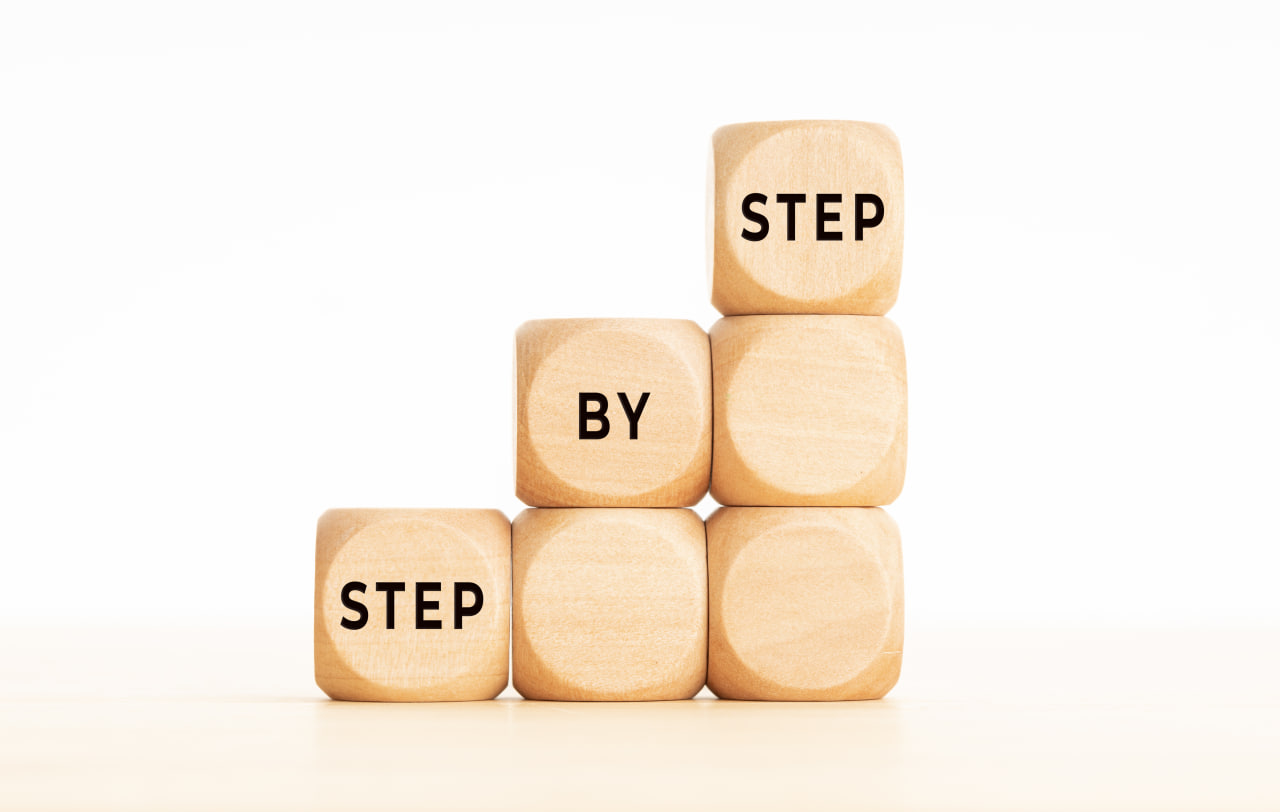5 Key Steps in the B2B Lead Generation Process: How Email Marketing Can Propel Your Strategy
In the competitive world of B2B (Business-to-Business) marketing, generating quality leads is essential for business growth and success. The ability to effectively nurture leads through a structured process is the backbone of a thriving B2B sales strategy. One of the most powerful tools in lead generation is Email Marketing.
Email marketing offers a direct line of communication with potential leads, and when executed well, it can significantly improve your lead generation efforts. This blog post will explore five key steps in the B2B lead generation process and explain how email marketing can be leveraged at each stage to maximize results.
Table of Contents
- Understanding the B2B Lead Generation Process
- Step 1: Identifying Your Target Audience
- Step 2: Creating Compelling Content
- Step 3: Building and Segmenting Your Email List
- Step 4: Nurturing Leads with Automated Campaigns
- Step 5: Analyzing and Optimizing Campaign Performance
- Case Study: How Email Marketing Boosted B2B Lead Generation for XYZ Corp
- Frequently Asked Questions (FAQ)
Understanding the B2B Lead Generation Process
The B2B lead generation process involves attracting, nurturing, and converting prospects into paying clients. It’s not a one-size-fits-all approach. Companies need to understand their audience, craft personalized content, and utilize various channels to engage potential customers. Among these channels, email marketing stands out as a cost-effective and scalable option to build relationships with leads.
The B2B lead generation process typically follows these stages:
- Awareness: Prospects become aware of your business or solution.
- Interest: They express interest by interacting with your content or requesting more information.
- Consideration: The leads evaluate your offerings against competitors.
- Decision: A lead is ready to make a purchase or engage your services.
At each of these stages, email marketing plays a pivotal role. Let’s dive into the five key steps that can help you optimize your B2B lead generation using email marketing.
Step 1: Identifying Your Target Audience
Effective B2B lead generation starts with identifying the right target audience. Without a clear understanding of who your ideal customer is, your lead generation efforts will be misguided, and your email marketing campaigns may fall flat.
How Email Marketing Fits:
Email marketing can assist you in identifying and segmenting your target audience by collecting valuable data. You can analyze the engagement levels of your subscribers, such as open rates, click-through rates, and responses to specific offers. This data can help you better understand who’s interested in your services and tailor your future campaigns to meet their specific needs.
Here are a few tips for identifying your target audience for B2B email marketing:
-
Create Buyer Personas: These are semi-fictional representations of your ideal customers. Buyer personas should include factors such as industry, job role, challenges, pain points, and buying behavior.
-
Use Data Analytics: Analyze your website and social media traffic, and look for patterns in your existing customer base. Tools like Google Analytics and LinkedIn Insights can provide key demographic information.
-
Customer Segmentation: Categorize leads by factors like company size, industry, geographic location, or purchase history. This enables you to send more relevant emails.
Step 2: Creating Compelling Content
Once you have a clear understanding of your audience, the next step is creating compelling content that resonates with them. This is the foundation of any successful lead generation strategy.
How Email Marketing Fits:
Your email content should be tailored to the stage of the lead generation funnel your prospect is in. Content should offer value, educate, or address their pain points. Here’s how you can use email to nurture your audience through compelling content:
-
Awareness Stage: Send informative content such as blog posts, infographics, or eBooks to educate your leads about industry trends and best practices. These emails should focus on providing value rather than making a direct sales pitch.
-
Consideration Stage: Send case studies, webinars, and comparison guides that highlight how your solution stands out from the competition. This helps the lead understand the potential value of your product or service.
-
Decision Stage: Offer product demos, customer testimonials, and exclusive offers to convert the lead into a paying customer.
Step 3: Building and Segmenting Your Email List
A high-quality email list is crucial for B2B lead generation. Not all subscribers are created equal, and sending generic messages to an entire list is not an effective strategy.
How Email Marketing Fits:
The power of email marketing lies in segmentation. By segmenting your email list, you can send more personalized, targeted content that is more likely to convert. There are several ways you can segment your list:
-
By Demographics: Segment based on factors like job title, company size, industry, or location.
-
By Engagement Level: Categorize leads based on their interaction with your previous emails. For example, you can create different lists for those who have opened your emails versus those who haven’t.
-
By Behavior: Track how leads interact with your website or specific offers. For instance, if a lead has visited a product page multiple times, they might be more interested in receiving a product demo.
Step 4: Nurturing Leads with Automated Campaigns
The nurturing process in B2B lead generation is about building trust and establishing relationships over time. It’s a long-term effort, and email marketing automation can make this process more efficient.
How Email Marketing Fits:
With email marketing automation, you can set up sequences of emails that are sent based on a lead’s behavior or position in the sales funnel. Here are a few types of automated email campaigns you can create:
-
Welcome Emails: When a new lead subscribes to your email list, send them a welcome email that sets expectations about what they’ll receive and how your solution can benefit them.
-
Drip Campaigns: These are automated email series designed to nurture leads over time. For example, you might send a series of emails that introduce different features of your product, share success stories, and offer special discounts.
-
Re-engagement Campaigns: If a lead hasn’t interacted with your emails in a while, you can send a re-engagement email with incentives or valuable content to bring them back into the fold.
Step 5: Analyzing and Optimizing Campaign Performance
The final step in the B2B lead generation process is to continuously analyze and optimize your email marketing campaigns. Lead generation is a dynamic process that requires regular tweaking to achieve optimal results.
How Email Marketing Fits:
Email marketing platforms offer robust analytics that allows you to track the success of your campaigns. Key performance indicators (KPIs) like open rates, click-through rates, bounce rates, and conversion rates provide valuable insights into how well your emails are performing.
Use A/B testing to experiment with different subject lines, email copy, CTAs (calls to action), and design elements to see what resonates best with your audience. Regularly reviewing these metrics helps you refine your approach and improve your lead generation efforts.
Case Study: How Email Marketing Boosted B2B Lead Generation for XYZ Corp
XYZ Corp is a B2B SaaS company that offers a project management tool for medium-sized enterprises. They were facing challenges in generating quality leads and wanted to improve their email marketing strategy.
The Challenge:
XYZ Corp had a small email list of potential leads, but their engagement rates were low. They lacked a structured lead nurturing process and weren’t converting enough leads into paying customers.
The Solution:
XYZ Corp implemented a targeted email marketing campaign using the following steps:
-
Segmentation: They segmented their email list into different groups based on industry, company size, and engagement level.
-
Content Creation: They created valuable content that addressed the specific pain points of each segment. For example, they sent case studies to enterprise-level leads and comparison guides to smaller businesses.
-
Automation: They set up an automated email sequence that nurtured leads over time, offering personalized tips, free trials, and product demos.
-
Optimization: They constantly monitored email performance, tweaking subject lines and CTAs to improve open and click-through rates.
Results:
Within six months, XYZ Corp saw a 50% increase in email open rates, a 30% increase in click-through rates, and a 25% increase in conversions. By using email marketing effectively, they were able to generate more qualified leads and increase their revenue.
Frequently Asked Questions (FAQ)
Q1: What is the best time to send B2B marketing emails?
The best time to send emails depends on your target audience. Generally, weekdays during business hours (8 AM – 12 PM) tend to see the highest open rates. However, you should A/B test to find the optimal timing for your specific audience.
Q2: How can I grow my email list quickly for B2B marketing?
You can grow your email list by offering valuable incentives like free resources (eBooks, whitepapers) or discounts in exchange for email subscriptions. Additionally, running targeted ad campaigns and using social media can help drive traffic to your landing pages.
Q3: How do I measure the success of my B2B email marketing campaigns?
The success of your email campaigns can be measured by key metrics like open rates, click-through rates, conversion rates, and ROI. These will give you insights into whether your campaigns are reaching and engaging the right audience.
Conclusion
Email marketing is an indispensable tool in the B2B lead generation process. By following the five key steps outlined in this blog post—identifying your target audience, creating compelling content, building and segmenting your email list, nurturing leads, and analyzing performance—you can create an effective email marketing strategy that drives conversions and boosts business growth.
Whether you’re new to B2B lead generation or looking to refine your approach, email marketing remains a powerful, cost-effective way to connect with potential clients and turn them into loyal customers. By implementing these strategies and continuously optimizing your efforts, you’ll be on your way to generating high-quality leads and achieving long-term success.






